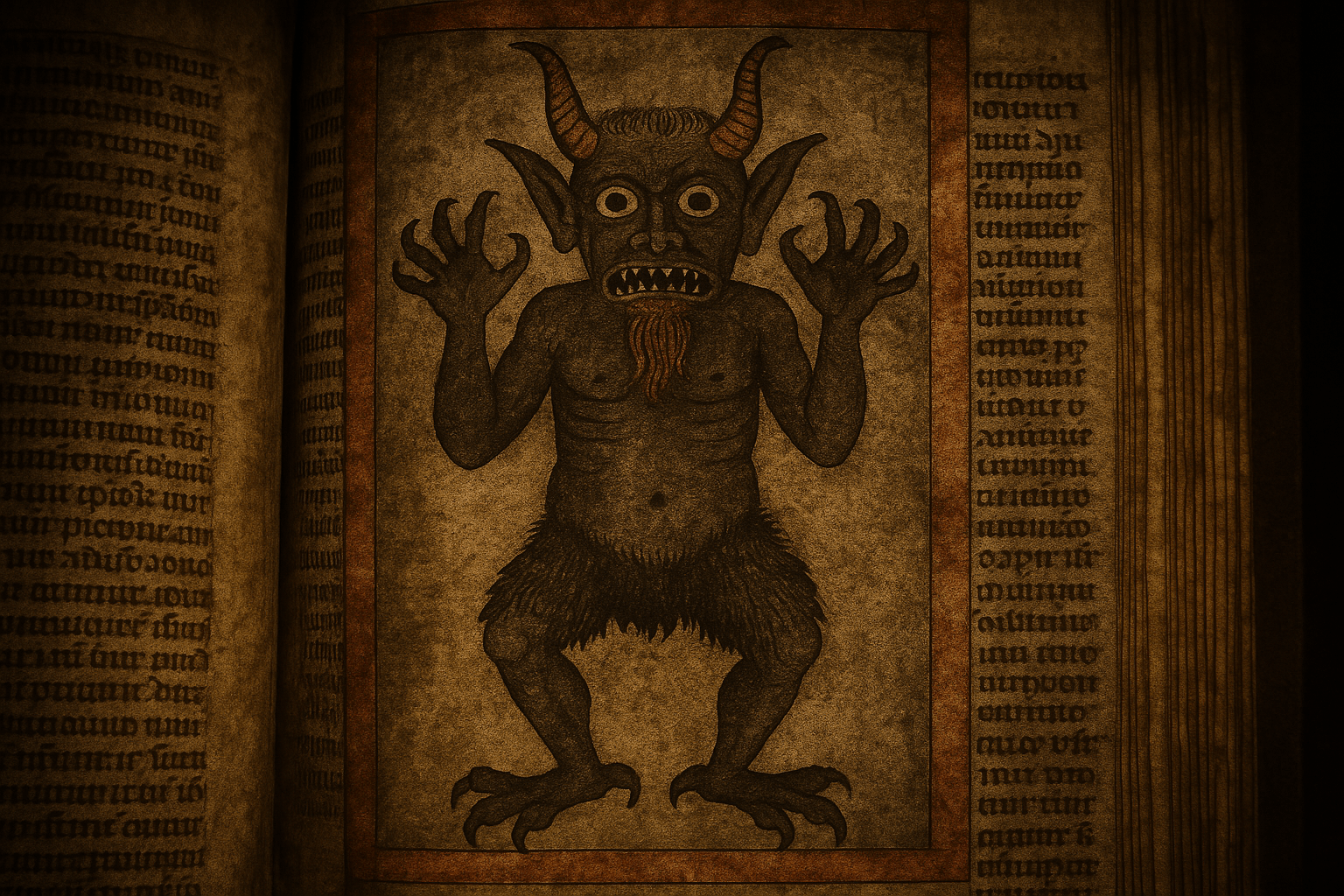Looming as a true giant among manuscripts, the Codex Gigas is the largest extant medieval book in the world. To understand its legendary status, one must first grasp its sheer, mind-boggling scale.
A Monument of Ink and Vellum
The codex is a masterpiece of physical presence. Bound in a wooden cover adorned with leather and metal fittings, it measures an astonishing 92 cm (36 inches) tall, 50 cm (20 inches) wide, and 22 cm (8.7 inches) thick. It weighs a staggering 75 kilograms (165 pounds)—requiring at least two people to lift it.
Its pages are not paper, but vellum, a prepared animal skin. It’s estimated that the hides of more than 160 donkeys were needed to create its 310 surviving leaves (it originally contained 320, but some were removed over the centuries). Every single page is a testament to immense material cost and human effort, a library’s worth of knowledge condensed into a single, colossal volume. The calligraphy throughout is remarkably consistent, leading scholars to believe it was the work of a single scribe—a lifetime’s achievement captured in ink.
The Legend of the Damned Monk
While its size is incredible, the codex’s true fame comes from the dark legend of its origin. The story begins in the early 13th century at the Benedictine monastery of Podlažice in what is now the Czech Republic. A monk, known to history only as Herman the Recluse, was said to have broken his sacred monastic vows. As punishment for his grave sin, he was sentenced to be walled up alive, a slow and agonizing death.
In a desperate plea for his life, the monk made an impossible promise. He vowed that in a single night, he would create a magnificent book containing the entire Bible and all worldly knowledge, bringing eternal glory to the monastery. His superiors, perhaps mockingly, agreed.
As the hours ticked towards midnight, the monk realized the futility of his task. Faced with certain doom, he performed a forbidden ritual, summoning not God, but the fallen angel Lucifer. He offered a pact: his soul in exchange for the Devil’s help in completing the book by sunrise. The Devil agreed, on one condition—that the monk includes a full-page portrait of his new master within the book’s pages.
By morning, the Codex Gigas was complete. The legend claims the monk, in a twisted form of gratitude, added the Devil’s portrait himself. This chilling tale of infernal intervention has clung to the book for centuries, earning it its infamous nickname.
A Face-to-Face Encounter
The most unsettling feature of the Codex Gigas is, without a doubt, the full-page illustration of the Devil. On folio 290 recto, a nearly 50 cm tall figure of Satan dominates the page. He is depicted half-squatting, with a green face, large red-tipped horns, sharp claws, and a menacing gaze. He wears only an ermine loincloth, often interpreted as a mockery of royalty.
This is no small, hidden doodle. It is a deliberate, powerful centerpiece. Placed directly opposite a beautiful rendering of the Heavenly City, it creates a stark and unforgettable dichotomy between good and evil, salvation and damnation, right at the heart of the book. While demonic figures were common in medieval art, such a prominent, non-narrative portrait of the Devil is unique and deeply disturbing.
Beyond the Legend: A Medieval Encyclopedia
Peeling back the layers of legend reveals a book that is far more than just a diabolical curiosity. The scribe’s ambition was to create a compendium of all important knowledge of the time. The contents are a fascinating mix of the sacred and the secular:
- The complete Latin Vulgate Bible.
- Two historical works by Josephus: Antiquities of the Jews and The Jewish War.
- The hugely influential encyclopedia Etymologiae by Isidore of Seville.
- A collection of medical texts, including works attributed to Hippocrates.
- A calendar, a list of local saints, and a necrology noting the dates of death for local figures.
- Most mysteriously, a section containing magical formulae and incantations for treating illnesses and catching thieves.
Paleographic analysis confirms that the manuscript was likely written by a single scribe, but not in one night. The uniformity of the script suggests a continuous project that would have taken an estimated 20 to 30 years of dedicated work. The legend, then, may not be a literal account but a metaphor for the almost superhuman obsession and sacrifice required to create such a monumental work alone.
A Cursed Journey Through History
The Codex Gigas’s journey is as dramatic as its creation myth. After the Podlažice monastery fell into financial ruin, the book was passed between several other monasteries before landing in the hands of the eccentric Holy Roman Emperor Rudolf II in Prague, a man fascinated by alchemy and the occult.
In 1648, at the end of the Thirty Years’ War, the Swedish army besieged and looted Prague. The Codex Gigas was seized as war booty and taken to Stockholm to be part of Queen Christina’s royal library. There, it narrowly escaped total destruction. In 1697, a devastating fire engulfed the Swedish Royal Castle. In the desperate chaos to save the library’s treasures, the massive codex was reportedly thrown from a window, supposedly injuring a person below and further cementing its cursed reputation.
Today, the Devil’s Bible rests safely behind reinforced glass at the National Library of Sweden in Stockholm. After more than 350 years, it has become a national treasure, drawing visitors from around the world who come to gaze upon its immense size and contemplate its dark, captivating story. Whether a product of a monk’s singular genius or a pact with the Prince of Darkness, the Codex Gigas remains one of history’s most fascinating and enigmatic artifacts—a true giant of the written world.
